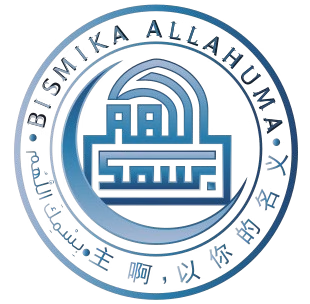Before 1881, all translations of the New Testament (including, most importantly, the 1611 King James Version (KJV), also known as the Authorised Version (AV)), were based on copies of Greek manuscripts known as the Textus Receptus, which is Latin for Received Text. (Abbreviated to TR).
But in the 19th and 20th centuries, older Greek manuscripts were discovered. These manuscripts have caused Bible scholars to revise what they believe is the correct text of the New Testament. The latest revision of this Greek Text is the United Bible Societies’ ‘The Greek New Testament’ (published by United Bible Societies, 4th Edition, 1993); (which I will abbreviate as UBS4). The successive revisions of the UBS New Testament are widely accepted in the field of Biblical Studies, and have been used for modern translations such as the Revised Standard Version (RSV), New International Version (NIV) and New Revised Standard Version (NRSV).
The UBS4 differs from the Received Text at thousands of points. In other words, the consensus of Bible Scholars is that, for at least a thousand years, the Christian church was using a Greek New Testament text which contained thousands of errors.
This raises the question : how significant are these differences ? Was the church, until 1881, misled by deficient Bibles ? Or were the differences minor and insignificant ?
The aim is (in principle) to list ALL the differences between UBS4 and the Received Text, and demonstrate that the Bible has too many textual variants to just simply ignore.
A short list is reproduced below. Bear in mind that these ones ARE the most important differences. The vast majority of the others are very small matters of spelling or word order.
You will notice that the majority (of the large differences listed here) are assimilations between the gospels. In other words scribes, apparently disturbed by the differences between the gospels, added (“assimilated”) text to make it match another gospel(s). Such changes cannot be simply ignored.
Most differences can be seen by comparing the KJV with a modern translation such as the RSV, NRSV or NIV (but not the NKJV, which is mainly just an updating of the language of the KJV).
Format
- Verse in bold
- Description of difference (in brackets and in italics). UBS4 is the modern Greek New Testament ; TR is the Greek used for the (1611) King James Version.
- Explain the difference in normal font.
The List
Matt. 5:22 (UBS4 omits ‘without cause’)
Matt 6:13 (UBS4 omits ‘For thine is the kingdom, and the power, and the glory, for ever’).
Matt 12:47 (UBS4 omits entire verse) - assimilated from Mark 9:32
Matt 17:21 (UBS4 omits entire verse) — assimilated from Mark 9:29
Matt 18:11 (UBS4 omits entire verse) — assimilated from Luke 19:10
Matt. 21:7 — (some manuscripts changed ‘them’ to ‘him’, because a scribe thought it was odd that Jesus would sit on two donkeys).
Matt 21:44 (UBS4 omits entire verse) — assimilated from Luke 20:18.
Matt 23:14 (UBS4 omits entire verse) — assimilated from Mark 12:20 and Luke 20:47
Matt 27:35 (UBS4 omits entire verse) — assimilated from John 19:24.
Mark 1:1 (‘Son of God’ is not be original, although UBS4 decides it probably is original.).
Mark 6:11 (UBS omits second sentence): assimilated from Matthew 10:15
Mark 7:16 (UBS4 omits entire verse) — copied from Mark 4:9 or 4:23
Mark 9:44 (UBS4 omits entire verse) — copied from Mark 9:48
Mark 9:46 (UBS4 omits entire verse) — copied from Mark 9:48
Mark 11:26 (UBS4 omits entire verse) — assimilated from Matt 6:15
Mark 15:28 (UBS4 omits entire verse) — assimilated from Luke 22:37
Mark 16:9 – 20 (UBS4 omits all 12 verses) — assimilated from numerous sources in Matthew, Luke, John and Acts. For more detail see The Text of Mark 16.
Luke 4:44 (UBS4 : ‘Synagogues of Judea’; TR : ‘Synagogues of Galilee’)
Luke 9:55 – 56 (UBS4 omits entire verse) — assimilated from Luke 19:10
Luke 11:2 – 4 (TR is similar to Lord’s Prayer in Matthew 6:9 – 13 ; UBS4 has it much shorter)
Luke 17:36 (UBS4 omits entire verse) — assimilated from Matt 24:40
Luke 22:43 – 44 (UBS4 omits these two verses [A])
Luke 23:17 (UBS4 omits entire verse) — assimilated from Matt 27:15, Mark 15:6
Luke 23:34 (UBS4 omits words of Jesus)
Luke 24:5 (some manuscripts lack the words ‘He is not here but has risen’; UBS4 says the words probably ARE original)
Luke 24:12 (Peter finding the empty tomb of Jesus — some manuscripts omit ; UBS4 includes)
Luke 24:51 (ascension of Jesus — some manuscripts omit ; UBS4 includes))
John 3:16 (‘begotten’)
John 5:4 (UBS4 omits)
John 7:53 – 8:11 (the woman found in adultery — UBS4 omits entire passage)
John 21:25 (there is manuscript evidence that this verse was not original).
Acts 8:37 (UBS4 omits verse)
Acts 15:34 (UBS4 omits verse)
Acts 24:7 (UBS4 omits verse)
Acts 28:29 (UBS4 omits verse)
Romans 16:24 (UBS4 omits verse) — copied from Romans 16:20
1 Timothy 3:16 (UBS4 : ‘which was manifest in the flesh’; TR : ‘God was manifest in the flesh’)
1 John 5:7 (The ‘Johainne Comma’ — UBS4 omits): 1 John 5:7 has long been known not to be original. It was never in the Greek manuscripts (the original language of the New Testament), but surfaced in the LATIN translation in the fifth century, AFTER the Trinity doctrine had been accepted ! It appears that a ‘gloss’ (a marginal comment in a Bible) accidentally found its way into the Latin Bible. Due to some “unfortunate” politics, Erasmus (who compared various manuscripts in the 16th century to select what he thought was the best Greek text) included the verse against his better judgement. From there it found its way into the King James Version (which was based on Erasmus’ text).

